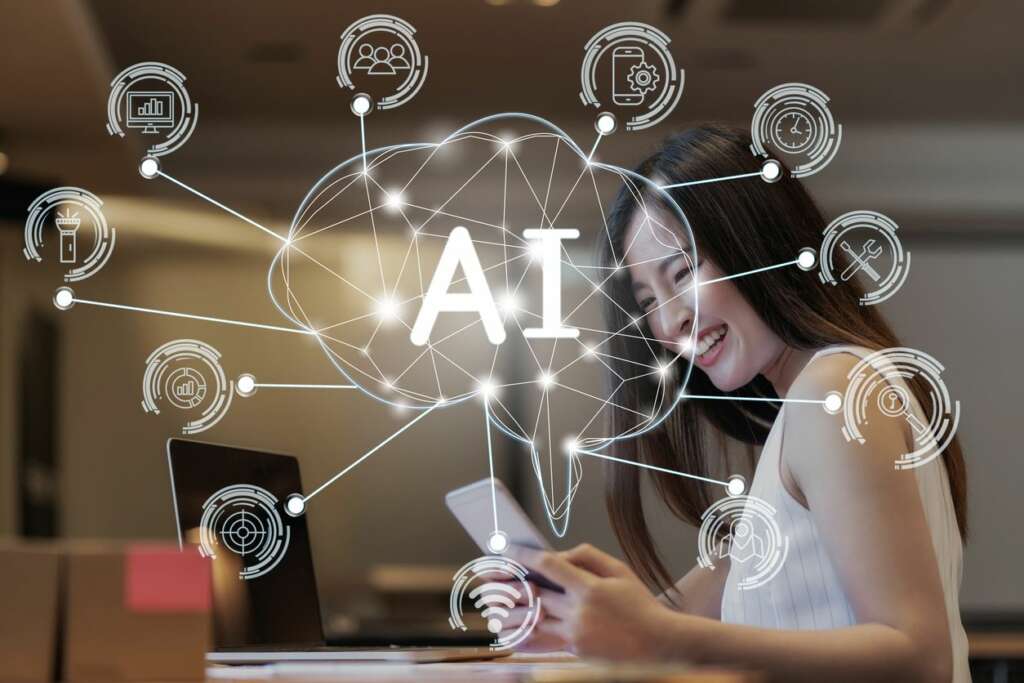
AI + Sensors + Robotics = Cobot

By Laurence Weir, Head of Medical & Healthcare at Plextek examines our future lives with robots
I am turning 40 this year, and it has been a never-ending constant within my lifetime that the age of the robot is just around the corner. Popular culture has consistently fevered around what robots will be doing for us, and against us, in the very near future. They have generally been represented with human levels of emotional intelligence, with access to instant analytic analysis skills. Whatever these stories portray, nearly all projections start with the utilisation of robots as a tool to improve our lives.
So, given the idea of a robots being used more ubiquitously in personal and professional life is interesting, the question turns to when the technologies required will fall into place and be integrated into a compelling product. What is needed is the mindset of smartphone development, where after decades of false starts and missteps, the individual technologies and integration partners finally coalesced into a compelling product for the mass market.
Even with the advances in electromechanical mechanisms, facilitating the next generation of robots and autonomous robotic machines, there are still hurdles which hold back their widespread adoption. The fact is that many of the tasks we perform as humans, even those that are repetitive and laborious, still require a level of human understanding to adapt to unforeseen events: Events that humans are very good at observing and reacting to, and computer systems up to this point are not.
There are clearly tasks for which robots, with their strength and their capability for repetitive exact movements, are much better suited than humans, who may be more suited for skilled tasks or tasks that are non-repetitive. Simply put, robots deliver greater accuracy and more high-quality work. They rarely make mistakes and generate more precision than human workers. They can also produce a greater quantity in a shorter amount of time. These are the factors which make them economic to implement, as compared to non-skilled human labour.
For many years, industrial robots were large-scale production systems operating in isolation, carrying out specific actions, without variation and to a high degree of accuracy, determined by software that specified the exact parameters of movement. Today, robotic systems have scaled down in size and cost, allowing robotic systems to play a more integrated role in environments such as laboratories and other industrial settings.
However, it is only when you combine these robots with two new elements, that means you have systems fit for the future:
- Accurate, low-cost sensors are required to collect information about the robot’s surroundings.
- AI is required to pool this sensor data and equate to real life outcomes that can be measured.
It is only in the last few years that these technologies have become so cheap and ubiquitous, thus allowing for an explosion in the applications that can be utilised by robotics. A robotic system which both detects its surroundings, and builds up an accumulation of knowledge based on previous interactions with humans an environment, and getting to desired outcomes, will be able to become a true Cobot, working with and around workers using the same environment.
Working hand-in-gripper
The prospects of robotics being able to be used with humans and complex stimuli, rather than in a sterile constant environment, will greatly expand their use. In a professional and domestic setting, we are already using a multitude of robotic tools which simplify tasks. However, the robots will soon be given the agency to collaborate and contribute to specific project goals, and so we will start working together within a shared space. The reduced cost-implication of setting up such a system will allow a step-change in the use of robotic systems. Given the issues with shortage of labour in places like the UK, the attraction of using robots in previously unexpected situations will become too great.
Such robotic systems, commonly referred to as cobots – collaborative robots – are being designed to operate in proximity to humans, collaborate with them, and move around independently in their shared workspace. They are still robots – but freed from their constraints. Thanks to their small size and mobility, cobots can be readily deployed in a range of environments.
Once a cobot has been installed in an area, it will keep learning to achieve more efficient outcomes given its constraints. AI is already pushing boundaries of efficiency, by approaching tasks in unexpected ways. Humans are at times good at a similar lateral thinking approach to novel problem solving. AI processing algorithms do not work the same, but will find new solutions through brute force.
Economic experts may differ in their view in how much the collaborative robotic market will grow in the next decade, but they all predict it will be exponential. Other technologies, such as smartphone or DNA sequencing, have seen a step change in growth due to specific technologies coming to market. For cobots, the rate of growth will be determined by the cost implication of their installation, with markets driving applications to wider use.
Machines Like Me
Such systems will be easy to train in new tasks, thanks to machine learning processes whereby the cobot learns to complete a task through repeated interaction within a dynamic environment. This exploration generates data, which is then used by the cobot to identify the best way to complete a task without recourse to human intervention. As the technology develops, AI systems could be introduced to predict actions and suggest improvements in procedures.
There is no doubt that many of the repetitive jobs performed by humans today will be done by robots tomorrow. But collaborative robotics demonstrates that such tasks can include highly interactive processes that provide a route to combining the skill that humans can bring with the capabilities of robots. This will allow activities to be conducted more effectively while creating more challenging and rewarding jobs in the process.


